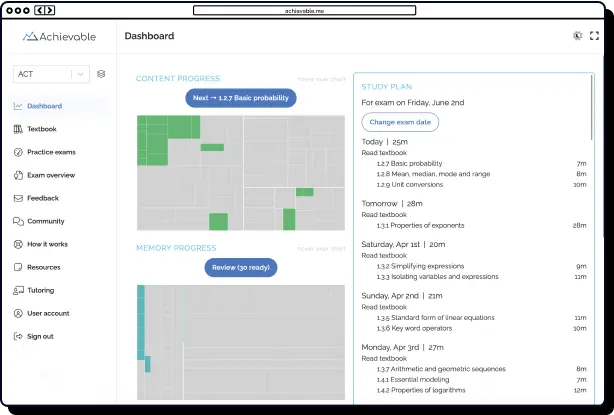
Master error logging with 4 focused strategies





Vince Kotchian is a seasoned educator and test-prep tutor who focuses exclusively on the GRE. Through his company, Vince Kotchian Test Prep, he leads a team of experts dedicated to helping students succeed in graduate school admissions. In addition to offering personalized one-on-one tutoring, Vince has co-authored GRE prep books and developed GRE courses and apps, including LinkedIn’s GRE preparation course. His practical, student-focused approach has empowered countless learners to master the GRE while studying efficiently and effectively.
How to build a useful GRE error log
Key points
- Logging every mistake isn’t productive; simplicity and a focus on official GRE practice questions lead to better learning.
- An error log works best when you look for patterns, discover why mistakes occur, and review errors after some time has passed.
- Practice should be specific and feedback-driven; wasting time on overly tough or irrelevant questions isn’t effective.
- A good error log is more than a list: it’s your personalized map for growth.
Many high-achieving GRE students notice they tend to make similar mistakes again and again, even with careful study. These recurring errors aren’t just about missing content; they can come down to test-taking habits, judgment, or focus during the exam. So how do you recognize, track, and correct these ongoing issues to make meaningful progress?
Repeated mistakes that go unaddressed can trip up even the most diligent test taker. The GRE is about analytical thinking and reasoning, so targeted improvement matters more than memorizing endless facts. If you can spot patterns in your mistakes, you’ll turn isolated errors into valuable learning moments. Yet many students don’t have an effective way to track their errors or use that information to improve.
Let’s look at practical ways to record and learn from your mistakes, understand which errors tend to linger, and use an error log to transform weaknesses into strengths. Treating every slip as a chance to learn puts you in a stronger position to keep making progress that lasts.
Keep your error log simple and focused
The most helpful error log keeps your GRE or TOEFL prep on track, especially when it’s based on official ETS practice questions. Keeping things simple, rather than noting every tiny misstep, lets you focus on the errors that truly matter.
Studies on self-guided learning back this up: students who make short, focused error logs using official questions improve faster than those who track everything.
A user-friendly log is quick to update. Instead of long explanations, jot down the main misunderstanding and how to address it. For example: “Misread ‘weaken’ question, chose a strengthening answer.” This makes recognizing patterns straightforward and your review time more productive.
The quality of your preparation materials is also important to consider. Because official questions match the actual exam in style and logic, mistakes here point out your biggest growth opportunities. Unofficial sources often miss the test’s unique approach, so practice with official resources is essential.
To sum up, a streamlined error log centered on official material helps you learn the most from every stumble. Trying to note every error from every source spreads your attention too thin and can hide the most important lessons.
How to diagnose and review errors effectively
Real improvement comes from using your error log to uncover the causes behind your mistakes. Instead of just making a list, break down each error. Start by asking yourself, “Why did I get this wrong?” Most mistakes fall into one of three groups:
- Conceptual errors: Gaps in your understanding of an idea or rule.
- Procedural errors: Misapplying a method or process.
- Careless errors: Simple slips, like misreading or rushing.
Sorting mistakes this way helps you find targeted solutions.
Another powerful technique is “retrieval practice.” Return to missed questions after a few days or a week and work through them again. Spacing out your review shows whether you really grasp the concept, not just remember the answer.
Pay close attention to patterns. Are you struggling repeatedly with certain topics or types of questions? For instance, if percent change questions in data interpretation frequently trip you up, it signals a need for deeper review.
Treat your error log as a dynamic tool. Update it regularly, and when you see consistent issues, shift your study plan to tackle the underlying problem directly. This approach builds self-awareness and adaptability, which are key for sustained progress.
Practice smarter, not just harder
Improving your GRE score is about more than putting in endless hours: it’s about practicing the right way. Many students get caught up in tackling ultra-difficult questions from third-party sources. While it’s good to challenge yourself, research shows you’ll make better progress by working with questions similar to those on the actual GRE.
Choose quality over quantity. Focus on official questions that reflect the exam’s style and difficulty. Intentional, focused practice with useful feedback is much more effective than grinding through dozens of overly complex or off-topic problems.
Honest self-evaluation is important too. Don’t ignore your mistakes or convince yourself you know a topic when you don’t. After each practice session, think about what went wrong and why. Instead of just reading the answer, explain it to yourself and try similar questions to be sure you really understand.
Be careful not to confuse familiarity with mastery. Seeing an explanation multiple times doesn’t guarantee you truly understand it. Using active recall, summarizing an idea from memory or solving similar problems again, supports long-term learning.
To make the most of your practice:
- Stick mostly to questions that closely resemble the real GRE.
- Take clear, structured notes on recurring mistakes and revisit them regularly.
- Use active learning methods: verbalize explanations, redo missed questions after a break, and practice under timed conditions.
This method encourages steady growth and builds the confidence and adaptive skills you’ll need for the GRE.
Make your error log work for you
An error log only leads to better results when it drives real change. Used with intention, it shows you exactly what to work on next. Go beyond simply listing problems: categorize them by topic, type, or reasoning, and track how often they appear. This points directly to the review areas that will make the biggest difference.
For best results, base your error log on official practice materials, since these closely match the nuances of the real exam. Reviewing mistakes from these sources sharpens your ability to handle the tricky wording and structure you’ll see on test day.
Keep your error log simple and sustainable. Digital tools like spreadsheets let you organize, spot trends, and set reminders for scheduled reviews. Set aside brief, regular check-ins with your log and focus on making consistent progress rather than chasing perfection.
Use your error log as a living resource by keeping it current, reviewing it actively, and letting it shape your next study steps. When used thoughtfully, it builds both your GRE mastery and your confidence as exam day gets closer.
Key principles: strategic error log use for GRE progress
To make the most of your GRE error log, keep these guidelines in mind:
- Make entries concise and clear, using official practice questions.
- Track only the patterns and key error types, not every small misstep.
- Take time before reviewing and redoing missed questions.
- Use your log to actively adjust your focus, instead of letting it gather dust.
A well-run error log is not just another task, it’s your roadmap for continual progress. Treat it as a flexible guide, and you’ll not only see your GRE score climb but also develop skills that serve you well beyond test day.

